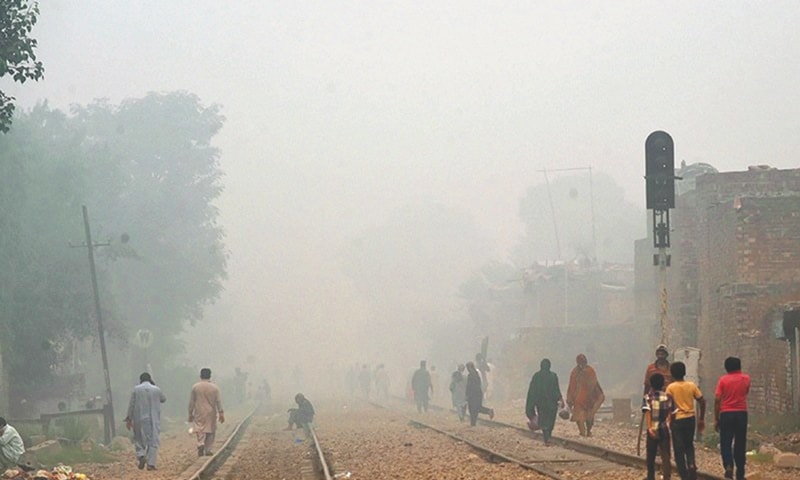Climate change is not something that is going to happen in the future — it is happening right now. Every year the planet is getting hotter and we are witnessing bigger hurricanes, increased flooding and more intense air pollution to name just a few of the disastrous impacts. Currently, the city of Lahore is covered in a thick blanket of smog — and it is not even December yet. The smog contains dangerous gases like sulphur dioxide which can cause damage to lungs, skin, eyes, etc. Experts say such extreme and strange events are examples of climatic changes.
According to Adil Najam, a Pakistani climate change expert based in the US, “Every month this year has been the hottest ever recorded for that month since measurement began. This was yet another year of alarming Arctic ice melt. And 2016 is poised to be the globally hottest year ever in historical record and the 40th consecutive year that the annual temperature would be above the 20th-century average”.
This November, world leaders will be meeting again in Marrakech, Morocco in regard to global warming at the annual UN Climate Change Conference. Last year a global agreement to curb climate change was reached in Paris at the 21st Conference of Parties (COP21) signatory to the United Nations Framework Convention on Climate Change (UNFCCC). The Paris COP was the largest gathering of heads of state that ever took place, signaling that the threat of climate change has now indeed become a top global priority.
A total of 196 countries approved the Paris Agreement which aims at limiting global average temperature increases to well below two degrees Celsius above preindustrial levels and to pursue efforts to limit it to 1.5°C. Each country submitted their individual Nationally Determined Contributions (NDCs) documents to the UNFCCC, which were basically voluntary plans to reduce their greenhouse gases.
There is a growing realisation, including in Pakistan, that climate change is a global priority
The agreement was widely heralded as most of the world finally agreed to do something tangible about controlling emissions from factories, cars, power plants and deforestation which are causing climate change. However, experts say that if you add up all the NDCs, they are not enough to reach the goal of the Paris Agreement. According to Adil Najam, “Even with full implementation, there will be an estimated global average temperature increase of between 2.6°C and 3.1°C by 2100.” This will prove to be catastrophic for low-lying small island states threatened by sea level rise and most of Africa and South Asia.
Under the Paris agreement, countries have agreed to meet every few years to approve plans and revise targets. A Green Climate Fund was also set up by rich countries, and developed countries have pledged to mobilise jointly at least 100 billion dollars a year by 2020 (to be scaled up later), to be given to adaptation and mitigation projects in developing countries. Developing countries are worried this amount might not materialise as rich countries are becoming increasingly reluctant to give generously to this fund. However, the fund is now operational and just recently a project working on protecting mountain communities from Glacier Lake Outburst Floods (GLOFs) in the north of Pakistan was given funding of 37 million dollars by the Green Climate Fund — the project will be implemented by the United Nations Development Fund in collaboration with the Ministry of Climate Change.
On November 4 this year, the Paris Agreement became a legally binding agreement since over 55 per cent of the signatories to the agreement have ratified it. Today, 92 countries including big emitters like China and the US (the world’s largest economies) have ratified the agreement. This week the government of Pakistan also ratified the Paris Agreement.
Most people agree that we are seeing good progress on the climate front as the Paris Agreement has come into force with unprecedented speed. The earlier Kyoto Protocol took seven years to ratify — in fact the US pulled out and never actually ratified it. The other good news on the climate change front is that there has been an agreement to limit HFCs (Hydrofluorocarbons) used in air-conditioners and refrigerators, which also contribute to global warming. Experts say this will shave off a further 0.5 degrees Celsius of global warming. Pakistan, along with the Gulf countries, has also agreed to phase out HFCs by 2028. Pakistan’s emissions are very low at the moment but we will be increasing our emissions with all the projects that are currently being implemented as part of the China-Pakistan Economic Corridor (CPEC). This is something Pakistan will need to keep an eye on.
Published in Dawn, Sunday Magazine, November 13th, 2016
















































